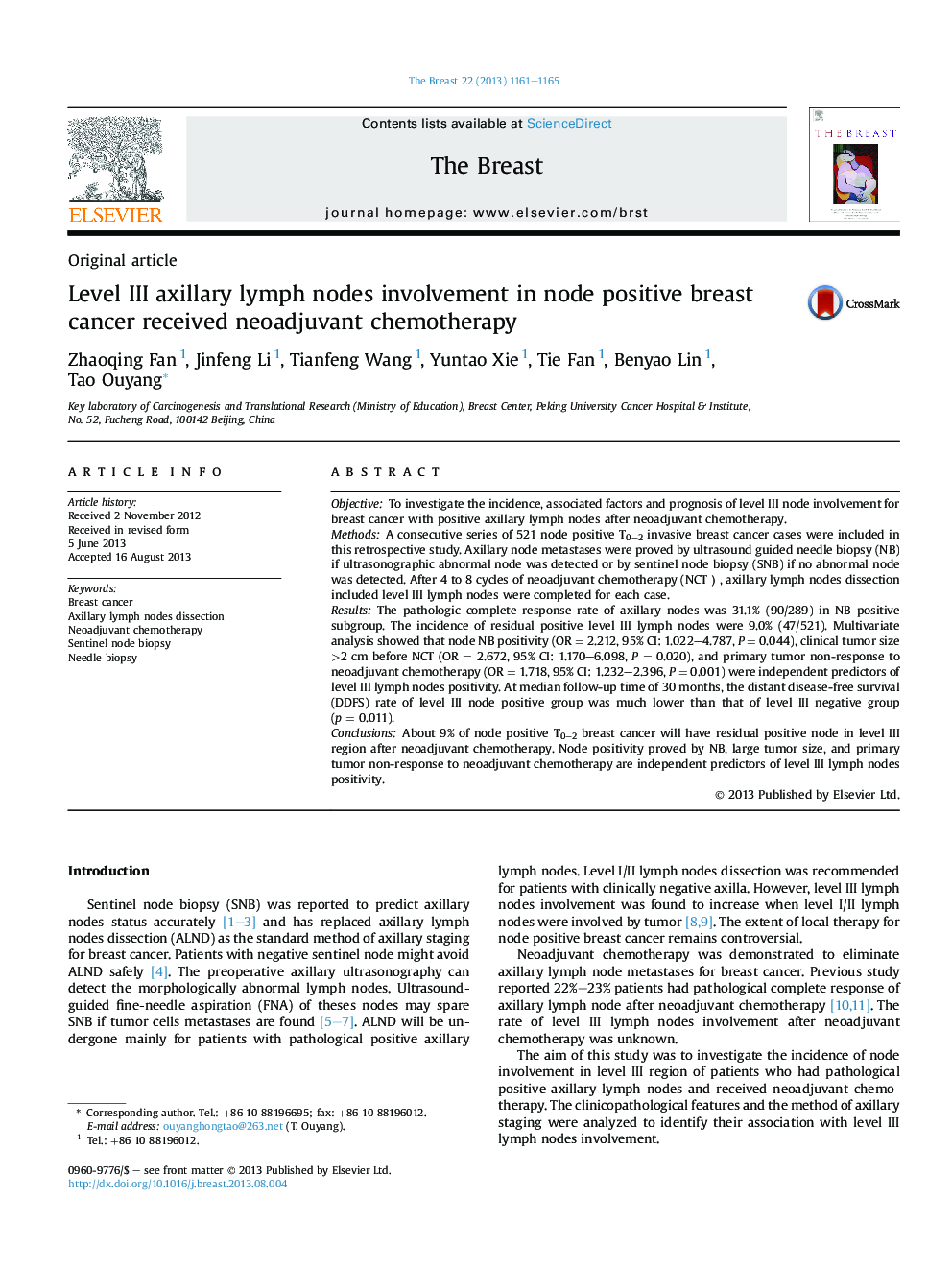| Article ID | Journal | Published Year | Pages | File Type |
|---|---|---|---|---|
| 6170178 | The Breast | 2013 | 5 Pages |
ObjectiveTo investigate the incidence, associated factors and prognosis of level III node involvement for breast cancer with positive axillary lymph nodes after neoadjuvant chemotherapy.MethodsA consecutive series of 521 node positive T0-2 invasive breast cancer cases were included in this retrospective study. Axillary node metastases were proved by ultrasound guided needle biopsy (NB) if ultrasonographic abnormal node was detected or by sentinel node biopsy (SNB) if no abnormal node was detected. After 4 to 8 cycles of neoadjuvant chemotherapy (NCTï¼, axillary lymph nodes dissection included level III lymph nodes were completed for each case.ResultsThe pathologic complete response rate of axillary nodes was 31.1% (90/289) in NB positive subgroup. The incidence of residual positive level III lymph nodes were 9.0% (47/521). Multivariate analysis showed that node NB positivity (OR = 2.212, 95% CI: 1.022-4.787, P = 0.044), clinical tumor size >2 cm before NCT (OR = 2.672, 95% CI: 1.170-6.098, P = 0.020), and primary tumor non-response to neoadjuvant chemotherapy (OR = 1.718, 95% CI: 1.232-2.396, P = 0.001) were independent predictors of level III lymph nodes positivity. At median follow-up time of 30 months, the distant disease-free survival (DDFS) rate of level III node positive group was much lower than that of level III negative group (p = 0.011).ConclusionsAbout 9% of node positive T0-2 breast cancer will have residual positive node in level III region after neoadjuvant chemotherapy. Node positivity proved by NB, large tumor size, and primary tumor non-response to neoadjuvant chemotherapy are independent predictors of level III lymph nodes positivity.
